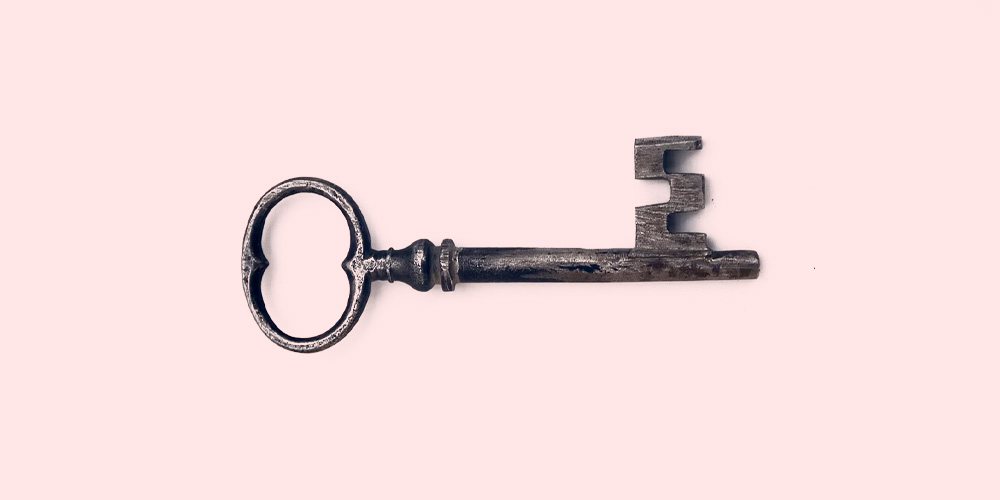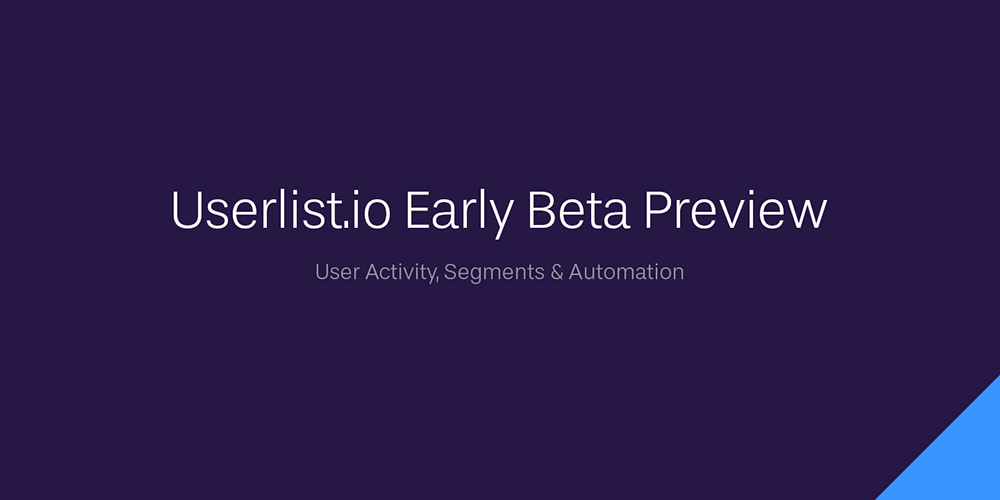Wondering how long users keep using your product? Looking for a way to calculate your user retention rate, and decide whether it needs your attention?
As SaaS founders, we’re pretty obsessed with the churn rate. We sometimes even panic when a user abandons our product, and we’re right to do so. But there’s another side to this equation: how long our loyal customers, the people who continually use our product, stay on board.
Sometimes, we might feel like we’re not calculating this metric correctly. Unfortunately, in doing so, we skip a critical element that can help our SaaS businesses grow even further.
In this guide, we’ll show you exactly how to change that. You will learn:
- How to calculate user retention
- How many of your existing customers stay with you, and for how long
- What you can do to increase user retention
What is user retention?
User retention is a very SaaS-focused metric that helps you understand how much your customers enjoy your product, how long they stay with you, and what their customer lifetime journey is.
In practical terms, retention rate reveals how many customers (measured in percent) your business retains over a specific timeframe.
In different words, retention is the opposite of churn. Instead of measuring how many customers churn, you focus on how many of them stay.
This simple metric impacts your business in many ways.
Obviously, retention is correlated with better growth. After all, it is cheaper to grow a subscription-based business by retaining customers than looking for new ones to replace customers who have churned.
But there is another aspect to this, often overlooked: the expansion revenue. This is the revenue you acquire when users expand their businesses, and their product usage needs to increase. As a result, they’ll most likely move to higher plans and your revenue will grow.
Factors that affect user retention
Here’s an important aspect of user retention: this metric is closely related to the value customers receive from your product.
Depending on the audiences you’re serving, this can be dramatically different. For example, certain types of audiences are just more inclined to have longer contracts in a longer lifetime.
Retention is also tied with the complexity of a product. The more your product is complex or difficult to set up, the harder it is to abandon. Take accounting software, for example. Once you have used it for a while and collected long-term data, migration becomes more challenging.
Other factors can also affect the retention rate. For example, your accountant might have a preferred platform, making it an obvious choice for you as their client. That’s why it’s worth investing in building relationships with industry experts, like we do in our consultants program.
How to calculate user retention
Before we show you how to calculate the user retention rates, we need to discuss a crucial aspect of the metric: it is entirely behavior-based.
It’s not about how many people log into the app, but the number of customers who take specific actions that confirm that those people have experienced the value of your product.
We explained this in-depth in our guide to user activation for SaaS.
To summarize, activated and engaged users are people who have realized how your product will help them achieve their SMART goals.
See this illustration by Samuel Hulick:
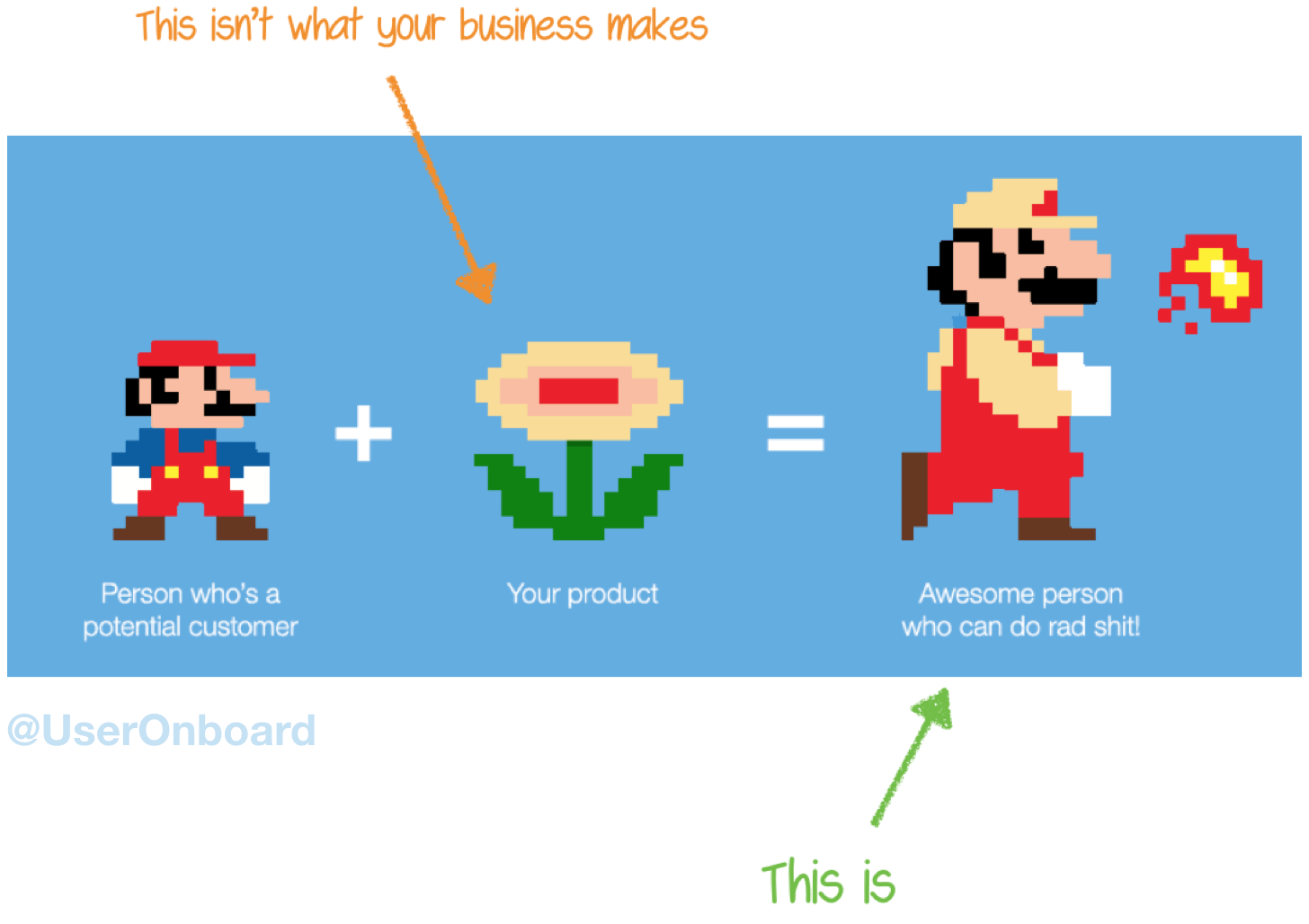
Those people signify that by completing what we call activation events: actions that suggest that a person has experienced the app at a certain level, and has at least some inclination of the value it offers.
When calculating your user retention rate, you need to understand your activation events and target customers who have reached that stage.
Use this formula to calculate the customer retention rate:

The total number of customers at the end of a period (minus) number of new customers acquired over that time (divided by) the number of customers at the beginning of that period.
Basically, you’re calculating the difference in the number of existing customers within a timeframe, excluding any new customers acquired in that time period.
You could also calculate retention rate for various user segments and other factors.
For example, you could calculate user retention per cohort (e.g. signup time or lead source) and get great insights. Such data would help you identify the best marketing opportunities and focus on strategies that deliver the best users.
Talking about calculating the retention rate brings up a question: how do other SaaS companies fare with their retention?
Let’s take a look.
SaaS user retention benchmarks
For this quick benchmark overview, we’ll use data from the 2020 B2B SaaS retention report by SaaS Capital. Here are some interesting findings:
- The net median retention rate is between 96% and 105%, largely depending on the annual contract value.
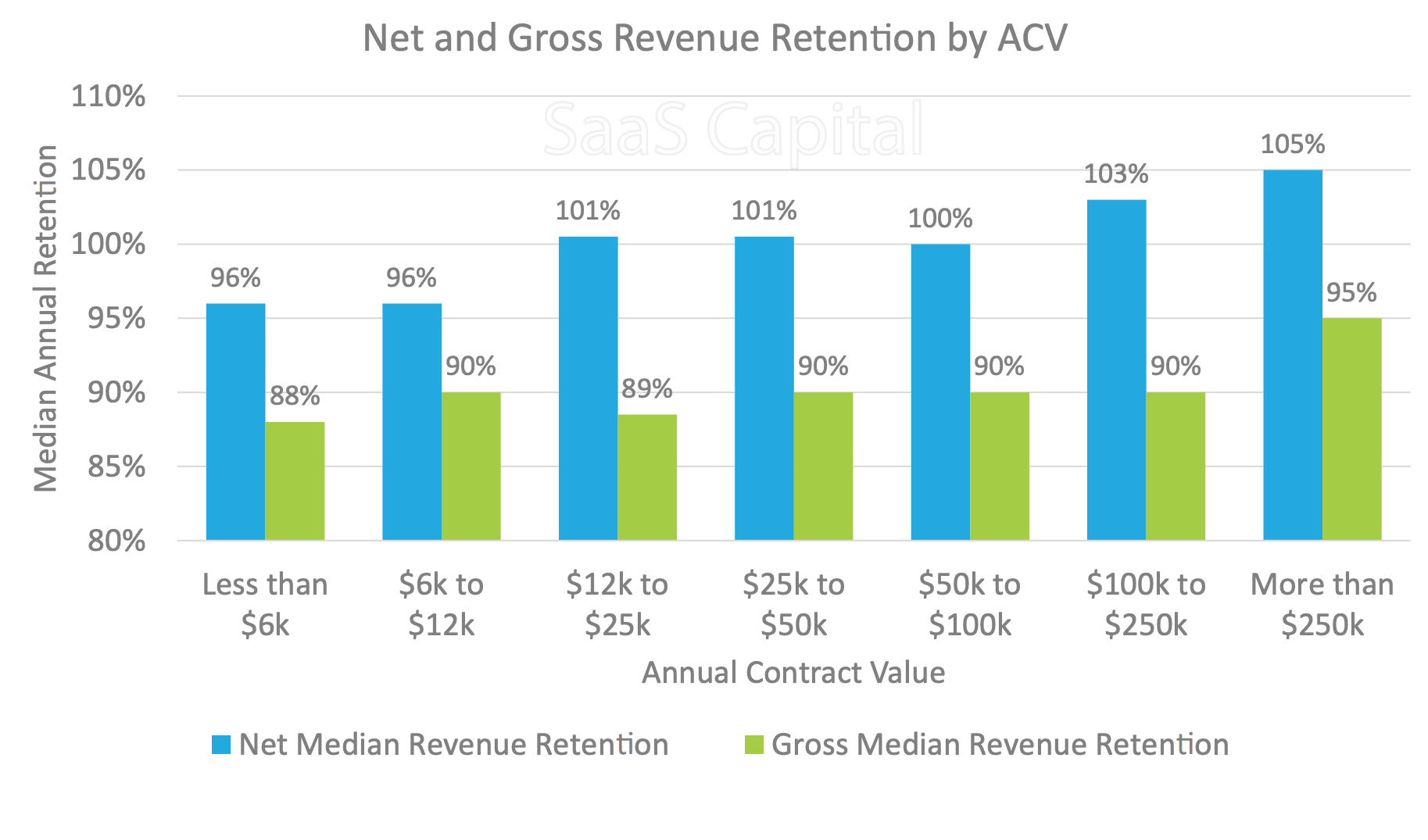
- The retention rate is also tied to your SaaS company’s growth rate.
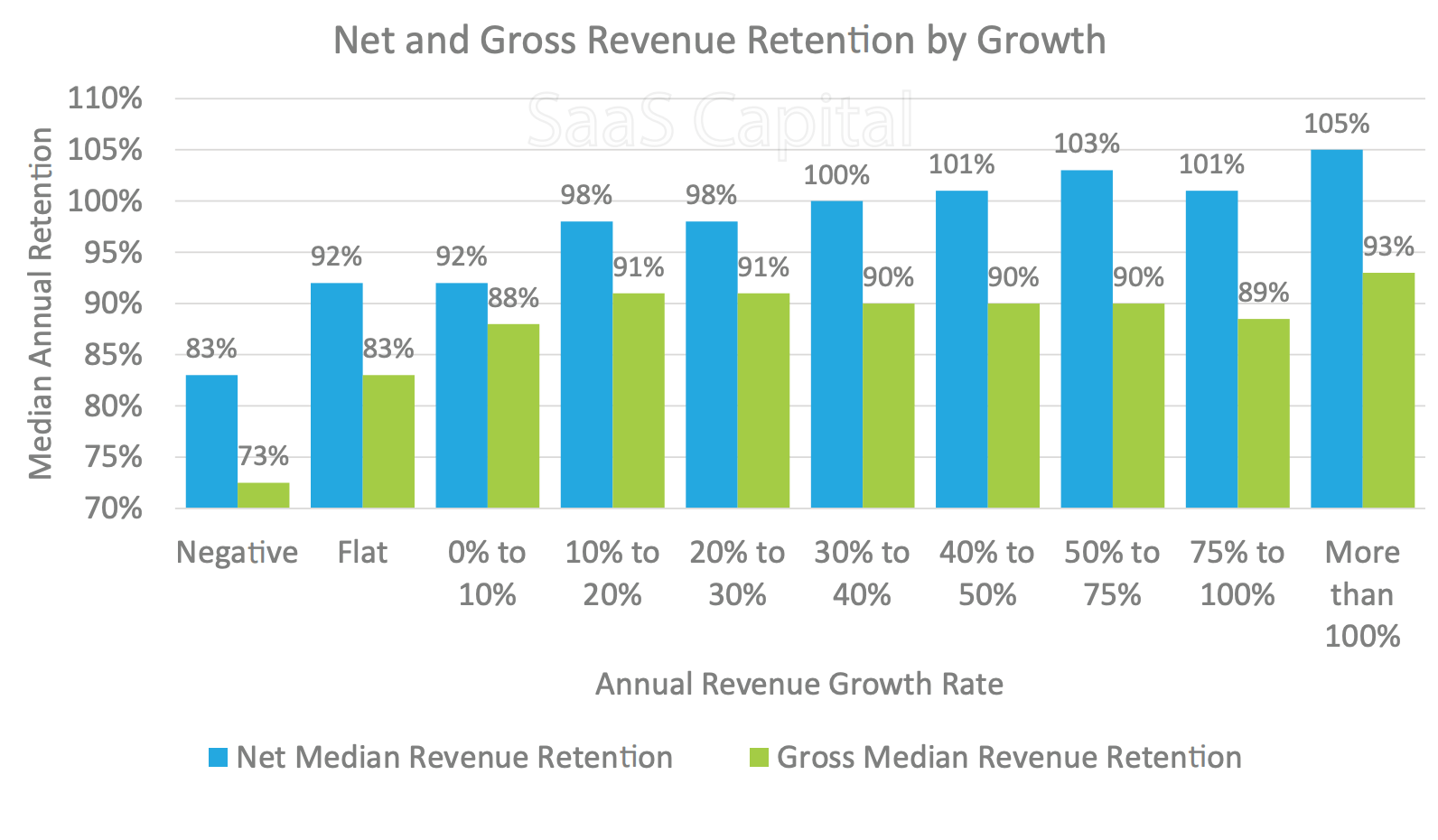
- Finally, it seems that VC-backed companies have a slightly higher retention rate (4% lead) vs bootstrapped companies. However, the report clarifies that since 2019, “bootstrapped companies narrowed the gap on gross retention to just one percentage point, supporting the comments above that gross retention is the “natural base” retention.”
How to increase the user retention rate
Here’s the thing about user retention: no matter what your current rate is, it could always be better.
What’s more, the revenue based on retention rate can go over 100%. After all, it would include upsells, new product cross-sells, price increases, or expansion revenue.
So how do you ensure that more customers continue using your product?
Here are a couple of strategies to consider.
#1. Better and more relevant communications
There are two aspects to this:
-
Using marketing automation to communicate with customers at the right time. For example, tools like Userlist help you send behavior-triggered emails, drip campaigns, in-app notifications, and other messages that you can target specifically at different users and segments. You can increase the relevance of your communications, educate customers, and help them see even greater value from your product.
-
Making yourself more available to customers who have a potential problem or issue. This would include opening new customer service channels and improving your response rates to ensure quicker resolution of issues.
#2. Monitoring for churn
As we’ve mentioned before, churn is the opposite of retention. This means you should proactively prevent churn before it happens.
By using relevant communications, you can help these users:
- Understand the value of your product
- Overcome whatever issues frustrate them
- Identify and fix the reasons for their poor customer experience.
#3. Recovering failed payments
Failed payments — i.e. involuntary churn — is no good reason to lose a customer. However, not all SaaS companies are intentional about their failed payments. You should be looking out for situations like expired cards, bank declines, funds not available, etc.
Automation can help, so you don’t have to email customers manually about each failed payment. You can recover failed payments with Userlist, or use dedicated software like Stunning or ChurnBuster.
#4. Focusing on activation
The sooner a person realizes the value of your product, the more likely they are to stay and continue using it.
So launch strategies aiming at improving your user activation. Here are just some ideas on what to do:
- Continuously refine your user onboarding process.
- Use in-app notifications to guide users to the most important features of your product. Offer proactive customer support.
#5. A dedicated customer success representative
This particular advice might not be relevant to your product. Not every product requires a customer success rep. For example, your tool might not be complex enough to warrant hiring one, or your company can’t afford another employee yet.
However, a customer success rep can help advocate for your company, onboard new users, follow up on renewals, encourage upsells, and do many other things to help retain customers.
#6. Incentives to prevent cancellations
Cancellations must be as simple as possible. It’s the law. Customers must be able to opt-out of your service without facing any obstacles on the way.
However, it doesn’t mean that you can’t offer them perks to change their minds. Offers and discounts might help change their mind and retain those customers for longer.
#7. Parking plans
If you run a “seasonal” SaaS — one that customers set up but then don’t use all the time like a hiring app, event management app, or a tool for sending one-time marketing campaigns — then you could allow customers to “park” their data for a low monthly fee.
In such cases, customers retain their information and move on to paying the full price when they need to use the tool again.
Offering “parking” fees allow you to retain those customers, albeit at a lower rate, instead of having them cancel their subscription completely.
Key takeaways
Sometimes, we overlook user retention, obsessing over new accounts and other growth metrics. But knowing how many customers enjoy your product, and how long they stay with you, can help boost almost every aspect of business growth.
You’ve learned how to calculate your user retention rate and what to do to increase it further. All that’s left to do is go and get started.
Good luck!
Looking to boost customer success? Check out how Userlist helps reduce the workload of your customer success team and helps you implement email automation to improve customer experience.
Don’t wait for the muse. Apply this step-by-step method to write high-performing email campaigns in hours, not weeks.



